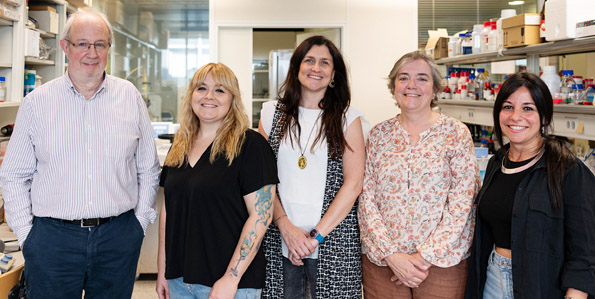"Nanokillers" against bacteria and other pathogens
An IDM team develops an intelligent nanodevice based on a component of cinnamon essential oil as an antimicrobial agent.
[ 24/05/2024 ]
A team of researchers from the Universitat Politècnica de València (UPV) and the CIBER de Bioingeniería, Biomaterials y Nanomedicine (CIBER-BBN) has developed an intelligent nano killer based on a component of cinnamon essential oil (cinnamaldehyde) for use as an antimicrobial agent.
So far, the new nanodevice has shown significant efficacy against pathogenic microorganisms such as Escherichia coli, Staphylococcus aureus, and Candida albicans. It could be applied for the elimination of pathogens that may be present in food, wastewater and in the treatment of nosocomial infections, which are those acquired during hospital stays.
In the case of Escherichia coli, most strains are harmless, although some can cause severe abdominal cramping or acute diarrhea and vomiting. In the case of Staphylococcus aureus bacteria, its effects can be skin infections, bloodstream infections, osteomyelitis, or pneumonia. Meanwhile, Candida albicans is a fungus found in different biological fluids, causing diseases such as candidemia or invasive candidiasis.
Easy application
According to the team of the IDM-CIBER NanoSens group, applying this " nanokiller " would be very simple. "For example, we could create a spray, make a formulation based on water and other compounds, and apply it directly. We could make a water-based formulation in the field and spray it directly, like any pesticide today. And in hospitals, it could be applied on bandages, and we could even try to make a capsule that could be taken orally," explains Andrea Bernardos, a researcher in the NanoSens group at the Inter-University Institute for Molecular Recognition Research and Technological Development (IDM).
High efficacy
The new nanodevice improves the efficacy of encapsulated cinnamaldehyde compared to the free compound: about 52-fold for Escherichia coli, about 60-fold for Staphylococcus aureus, and about 7-fold for Candida albicans.
"The increase in the antimicrobial activity of the essential oil component is possible thanks to the decrease in its volatility due to its encapsulation in a porous silica matrix and the increase in its local concentration when released due to the presence of the microorganisms," highlights Andrea Bernardos, a researcher at the Inter-University Research Institute for Molecular Recognition and Technological Development (IDM).
It stands out for its high antimicrobial activity at very low doses, among its advantages. In addition, it enhances the antimicrobial properties of free cinnamaldehyde with a reduction of the biocidal dose of around 98% for bacterial strains (Escherichia coli and Staphylococcus aureus) and 72% for the yeast strain (Candida albicans) when the nanodevice is applied.
"Moreover, this type of device containing natural biocides (such as essential oil components) whose release is controlled by the presence of pathogens could also be applied in fields such as biomedicine, food technology, agriculture, and many others," concludes Ángela Morellá-Aucejo, also an IDM researcher at the Universitat Politècnica de València.
The results of this study have been published in the journal Biomaterials Advances.
Reference
Ángela Morellá-Aucejo, Serena Medaglia, María Ruiz-Rico, Ramón Martínez-Máñez, María Dolores Marcos i Andrea Bernardos, “Remarkable enhancement of cinnamaldehyde antimicrobial activity encapsulated in capped mesoporous nanoparticles: a new nanokiller approach in the era of antimicrobial resistanec”, Biomaterials Advances, volum 160, 2024, 213840.https://doi.org/10.1016/j.bioadv.2024.213840.
Outstanding news
 Study a degree at the best technological university in Spain
Study a degree at the best technological university in Spain
The Universitat Politècnica de València is ranked number 1 among Spanish technology universities, according to the Shanghai ranking
 Highly Cited Researchers 2025
Highly Cited Researchers 2025
Avelí Corma, Juan Bisquert and Luis Guanter, the international scientific elite with a Universitat Politècnica de València hallmark
 Historic Milestone in Spanish Higher Education
Historic Milestone in Spanish Higher Education
The UPV inaugurates the Beihang Valencia Polytechnic Institute, the first Spanish university center in China
 Study in English
Study in English
The UPV offers eight degrees, 16 master's and 650 courses in English for the 2025-26 academic year
 A Latin Grammy... with the UPV hallmark
A Latin Grammy... with the UPV hallmark
'Music teaches us to listen and live together,' says Rafael Serrallet, Doctor of Music at the UPV, awarded in Las Vegas as the author of the Best Instrumental Album of 2025
 THE Impact Ranking
THE Impact Ranking
The UPV, the Spanish university with the greatest social and economic impact in the world

